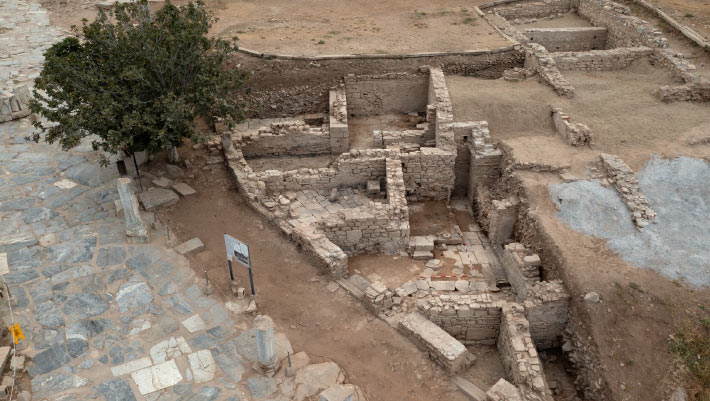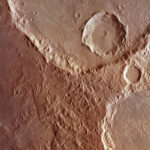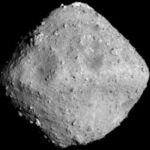Archaeologists from the Austrian Academy of Sciences have uncovered the 1,400-year-old ruins of the business and gastronomy district in Ephesus, an ancient city in modern-day Turkey.
The excavation area (center) at Domitian’s Square (bottom – Upper Agora, top – Curetes Street) in Ephesus, Turkey. Image credit: OeAW-OeAI / Niki Gail.
Ephesus was an ancient port city whose well-preserved ruins are about 3 km southwest of the present-day Selçuk in İzmir Province, Turkey.
The city was built in the 10th century BCE by Attic and Ionian Greek colonists.
It was once considered the most important Greek city and the most important trading center in the Mediterranean region.
Ephesus changed its location several times in the course of its long history in accordance with habits and requirements.
The newly-discovered city quarter dates from the Byzantine period and was likely destroyed around 614-615 CE.
“All the household goods in the rooms were sealed by a thick burnt layer and thus preserved for posterity, making it possible to get unique snapshots of ancient life today,” said Dr. Sabine Ladstätter, director of the Austrian Archaeological Institute at the Austrian Academy of Sciences.
“This makes the find comparable to the archaeological site of Pompeii.”
The Byzantine district is located on Domitian’s Square, a prominent public place directly adjacent to the Upper Agora, the political center of Ephesus during the Roman period.
“That the originally large Roman square complex was built over by shops and workshops in Late Antiquity was to be expected,” Dr. Ladstätter said.
“What was completely unexpected, however, was the state of preservation as well as the exact time of destruction and the implications for urban history that can be derived from it.”

Several business premises were uncovered in the Byzantine quarter in Ephesus, Turkey. Image credit: OeAW-OeAI / Niki Gail.
The archaeologists unearthed several business premises, including a cookshop, a storeroom, a taberna, a shop for lamps and Christian pilgrim souvenirs, and a workshop with an attached salesroom.
“A unique find is the discovery of around 600 small pilgrim bottles that were sold to Christian pilgrims here and could be worn around the neck,” they said.
“Countless pieces of crockery were found, numbering in the thousands, including whole bowls with the remains of seafood such as cockles or oysters, as well as amphorae filled with salted mackerel.”
“Also found were stones from peaches, almonds and olives, but also charred peas and legumes.”
“Particularly spectacular are four gold coins (solidi) belonging together and several business tills with over 700 copper coins.”
“The archaeological finds show us a destruction by massive fire that must have been sudden, dramatic and momentous,” Dr. Ladstätter said.
“It will no longer be possible to determine the exact day of the destruction, but the evaluation of the fruits found will at least clarify the season.”
“Was it an earthquake? There are no indications of that. Neither have walls shifted, nor have floors heaved up. No human remains were discovered either.”
“However, several arrowheads and spearheads were excavated, indicating a military conflict.”
“It is fitting that coins dating to the same time were also found in Sardis, around 100 km from Ephesus, proving destructions within this Turkish city.”
“These were previously associated with invasions of western Asia Minor by the Persian Sasanids, but this has so far been disputed in research.”




